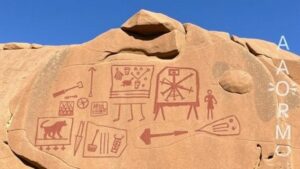Following Secret Paths on Maps Used by Early Fur Traders and Merchants
Introduction
The early fur trade was a cornerstone of economic activity in North America from the 16th to the 19th centuries. Traders and merchants relied heavily on intricate networks of routes that were often undocumented, depending on maps that included secret paths known primarily to Indigenous peoples and seasoned traders. This article explores the significance of these pathways, how they were documented, and their role in the success of the fur trade.
The Fur Trade Landscape
During the fur trade era, diverse landscapes presented unique challenges and opportunities. terrain ranged from dense forests to expansive waterways. These natural features often dictated trade routes, as traders sought to navigate efficiently through and around obstacles.
Historical Context
The fur trade began in the early 1600s, primarily driven by European demand for fur garments. French, British, and later American merchants sought to exploit North Americas rich beaver populations. By establishing trading posts and alliances with Indigenous groups, they accessed remote areas. Maps became crucial in charting new settlements and showing the interconnected paths used over time.
Secret Paths and Indigenous Knowledge
Many traders depended greatly on Indigenous peoples for navigation. Indigenous communities used traditional knowledge to traverse the land, maintaining secret routes that were not present on any formal maps. e paths often included:
- Animal trails that led into the heart of the wilderness, facilitating the transport of goods.
- Seasonally effective routes based on the movement of wildlife and natural resources.
- Network of waterways that acted as transport highways.
Such knowledge was indispensable for the early traders who could capitalize on these secret paths to access rich fur-bearing areas more efficiently than their competitors.
Mapping Techniques
Early maps were a blend of artistic representation and practical utility. Thomas Jefferson, for instance, emphasized precise surveying techniques that drastically improved map accuracy. Nonetheless, many traders relied on less formal maps that passed down through oral histories and personal accounts.
Types of Maps Used
The types of maps utilized by early fur traders varied significantly:
- Manuscript Maps: Often hand-drawn, these maps incorporated local knowledge, marking routes that included secret paths.
- Commercial Maps: Published maps aimed at engaging investors often oversimplified routes, ignoring critical paths used in everyday trading.
- Surveyor Maps: With an emphasis on geographical features, these were instrumental in establishing boundaries and trading routes.
Real-World Examples
The explorations of fur trader Alexander Mackenzie reveal the significance of these secret paths. Mackenzie’s journey in 1789 to reach the Pacific Ocean was marked by Indigenous guidance that utilized various waterways and trails not recorded in existing European maps. His subsequent mapping efforts were groundbreaking and showcased a detailed understanding of the networks in the region.
Impact on Trade and Settlements
The efficiency of travel along these secret paths greatly influenced trade dynamics and settlement patterns. For example, traders who navigated shorter, safer routes could maximize their profits and foster new alliances, enabling the establishment of posts like Fort Vancouver, which became a critical hub in the fur trade network.
Economic Implications
Economically, the utilization of secret paths reduced the cost of transportation and increased the speed of transactions. According to a study, routes that leveraged Indigenous knowledge could cut travel time by as much as 30%. With effective supply routes, traders were not only able to expand their operations but also secure better pricing for furs due to their improved procurement strategies.
Cultural Exchange
The interaction between traders and Indigenous peoples on these paths fostered cultural exchanges that transcended mere economic transactions. Collaborative ventures led to shared technologies and a blending of traditions, particularly in crafting tools and techniques that aided in the fur trade.
Conclusion
Following secret paths on maps used by early fur traders and merchants exemplifies the significant impact of traditional Indigenous knowledge on Western exploration and economic practices. e pathways facilitated not only the efficiency of trade but also the development of cross-cultural relationships. Understanding these routes reveals deeper insights into the complexities of the fur trade era, underscoring the importance of recognizing and preserving Indigenous contributions to history.
Actionable Takeaways
- Fostering relationships with local Indigenous communities can provide invaluable insights into historical trade practices.
- Studying historical maps can yield lessons on ecological stewardship and sustainable route management.
- Understanding the dynamics of trade routes offers comprehensive insights into contemporary supply chain management.


